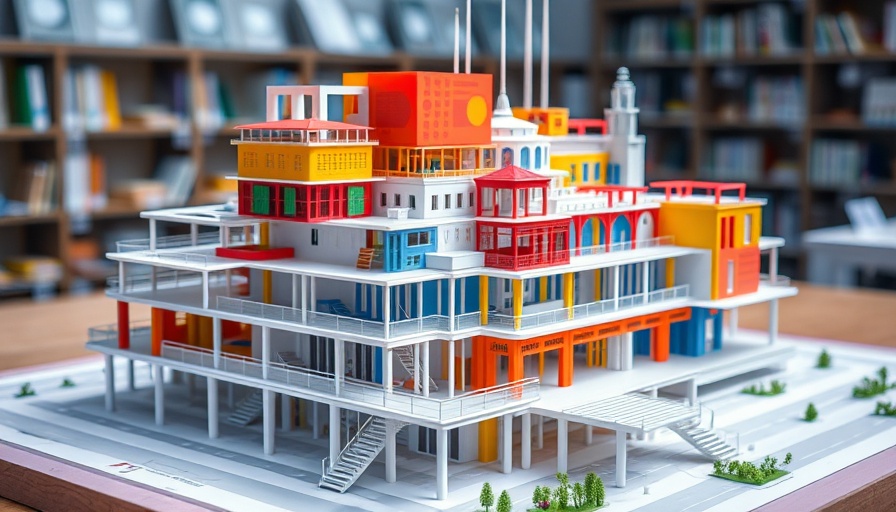
Innovative Designs from the Royal Danish Academy
The Royal Danish Academy has once again set the stage for architectural innovation with the showcase of nine standout projects from their recent graduation exhibition. These projects are not merely creativity in brick and mortar; they represent a heartfelt response to critical global issues, particularly around sustainability. Featuring diverse approaches—from rethinking physical materials to designing spaces that promote ecological coexistence—these graduates are paving the way for the future of architecture and design.
Learning From Nature: The Birthing Clinic
One of the notable projects, The Birthing Clinic by Alma Kober Sørensen, takes a soulful approach by embedding architecture within the ecosystems of Rajasthan, India. With the dual challenge of maternal malnutrition and declining biodiversity, this proposal envisions a multispecies habitat that serves both medical and educational functions for mothers and their children. By integrating natural habitats alongside human facilities, it aims to cultivate a supportive environment where human and nature thrive together—an inspiring example of how design can connect communities to their natural landscapes.
Turning Waste into Wealth: Beyond Debris
Sandro Siefert's project, Beyond Debris, presents an innovative way to reimagine urban waste. By transforming demolition sites into digital material banks, he not only highlights the value hidden in what is often dismissed as refuse but also enhances traditional building methods with advanced technology. Using photogrammetry, Siefert captures the precision of demolished materials, creating a clear pathway to poetic restoration and reuse. This project embodies a critical shift in architectural perception: waste can become a resource, and every discarded object has the potential to be reimagined into new creations.
Emotional Reconnection Through Design
In a world increasingly dominated by screens and digital experiences, the Stay Soft Collection spearheaded by Sarah Blicher Bruunsgaard Bek invites us to reconsider our neglect of sensory engagement. By intertwining fashion and philosophy, this collection emphasizes the tactile experience, encouraging individuals to reconnect with their physical selves. This is a compelling reminder for digital nomads who often work from home without the balance that comes from being fully present in their physical environments. Beautifying their workspaces with thoughtful designs can significantly uplift their emotional and sensory experiences.
Sustainability and the Future
Each of these projects underlines a powerful message about sustainability—something that resonates deeply with the obligations of today’s architects and designers. The emphasis on the United Nations Sustainable Development Goals within the coursework at the Royal Danish Academy illustrates a commitment to cultivating not only innovative ideas but also socially responsible practices. As remote work becomes the norm for many, creating spaces that prioritize wellness and sustainability is critical—not just for the individual but for the planet.
Inspiration for Digital Nomads
For digital nomads, the innovative projects from the Royal Danish Academy offer valuable insights into creating efficient and welcoming workspaces. Whether it’s by incorporating natural elements or investing in technology that enables sustainable practices, these architecture students emphasize the importance of thoughtful design in enhancing productivity and wellness. By following these emerging trends and integrating ideas from these imaginative projects, remote workers can cultivate personalized workspaces that inspire creativity and maintain a healthy balance between work and life.
 Add Row
Add Row  Add
Add 




Write A Comment